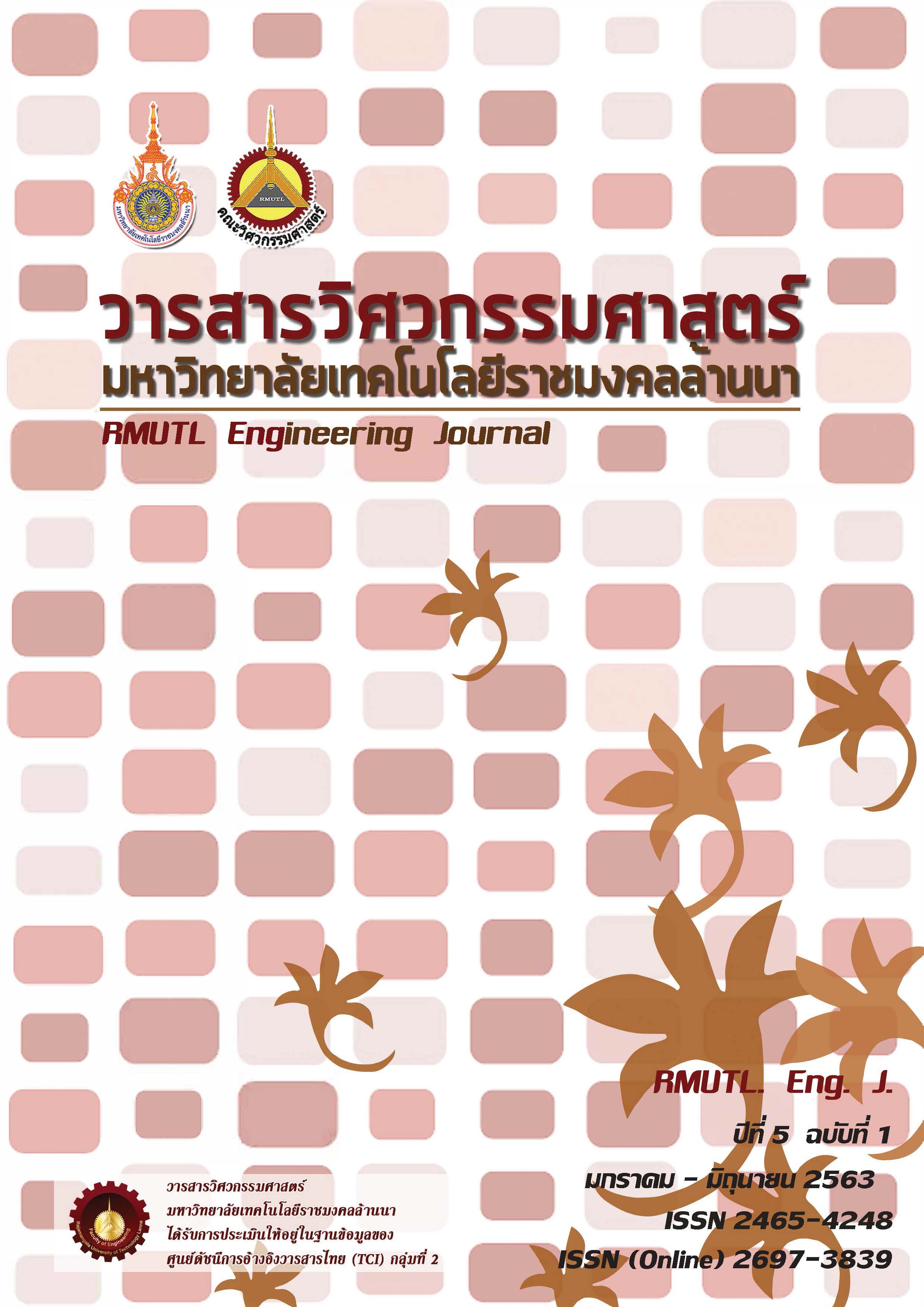Degradation of Caffeine and Dissolved Organic Carbon in RO Water and Treated Wastewater by UVC/H2O2 Process
Keywords:
Caffeine, DOC, UVC/H2O2Abstract
This research investigated the treatment of caffeine and dissolved organic carbon (DOC) using Ultraviolet C (UVC) photolysis and Ultraviolet C (UVC) photolysis in combination with hydrogen peroxide (H2O2). Degradation of caffeine and DOC was observed in the matrix solution of caffeine which was dissolved in both of RO water (RO+Caf) and treated wastewater (Eff+Caf). The results showed that degradation of caffeine in the matrix of RO+Caf and Eff+Caf using UVC or H2O2 alone could not be treated effectively. Conversely, the effective treatment occurred when the UVC radiation was combined with H2O2 (UV/H2O2). The maximum caffeine removal efficiencies of RO+Caf and Eff+Caf were 100% and 41.62% respectively, whereas the maximum DOC removal efficiencies of RO+Caf and Eff+Caf were 28.37% and 1.95% respectively. Because turbidity and color of Eff+Caf were higher than Ro+Caf these effect on the UVC light transmittance in the UVC/H2O2 reaction of caffeine degradation in Eff+Caf. In addition, it concluded that the DOC in the effluent could not be treated with the UVC/H2O2 technique. Increasing H2O2 dosage in UVC/H2O2 process was able to improve the caffeine removal efficiency in Eff+Caf. The removal efficiency presented 76.64% at H2O2 500 mg/l, and these were likely to be more effective if the H2O2 dosage was increased. On the other hand, increasing the dosage of H2O2 could not improve the efficiency of the DOC removal.
References
2.Petrie B, Barden R, Kasprzyk-Hordern B. A review on emerging contaminants in wastewaters and the environment: Current knowledge, understudied areas and recommendations. Water Res. 2014;72(0):3–27. Available from:http://dx.doi.org/10.1016/j.watres.2014.08.053
3.Graham. Caffeine Its Identity, Dietary Sources, Intake and Biological Effects. 1978;
4.Wang D, Sui Q, Lu SG, Zhao WT, Qiu ZF, Miao ZW, Yu G. Occurrence and removal of six pharmaceuticals and personal care products in a wastewater treatment plant employing anaerobic/anoxic/aerobic and UV processes in Shanghai, China. Environ Sci Pollut Res. 2014;21(6):4276–85.
5.Strauch G, Möder M, Wennrich R, Osenbrück K, Gläser HR, Schladitz T, Schirmer M. Indicators for assessing anthropogenic impact on urban surface and groundwater. J Soils Sediments.
2008;8(1):23–33.
6.Sauvé S, Aboulfadl K, Dorner S, Payment P, Deschamps G, Prévost M. Fecal coliforms, caffeine and carbamazepine in stormwater collection systems in a large urban area. Chemosphere. 2012;86(2):118–23.
7. Luo Y, Guo W, Ngo HH, Nghiem LD, Hai FI, Zhang J, Wang XC. A review on the occurrence of micropollutants in the aquatic environment and their fate and removal during wastewater treatment. Sci Total Environ. 2014;473–474:619–41. Available from: http://dx.doi.org/10.1016/j.scitotenv.2013.12.065
8.Klavarioti M, Mantzavinos D, Kassinos D. Removal of residual pharmaceuticals from aqueous systems by advanced oxidation processes. Environ Int. 2009;35(2):402–17. Availablefrom: http://www.ncbi.nlm.nih.gov/pubmed/18760478
9.Snyder S, Westerhoff P, Wert E, Yoon Y. Endocrine Disruptors and Pharmaceuticals: Implications for the Water Industry. Proc Water Environ Fed. 2003;2005(13):3166–93.
10.Shu Z, Bolton JR, Belosevic M, Gamal El Din M. Photodegradation of emerging micropollutants using the medium-pressure UV/H2O2 Advanced Oxidation Process. Water Res. 2013;47(8):2881–9. Availablefrom: http://dx.doi.org/10.1016/j.watres.2013.02.045
11.Kim I, Yamashita N, Tanaka H. Performance of UV and UV / H 2 O 2 processes for the removal of pharmaceuticals detected in secondary effluent of a sewage treatment plant in Japan. 2009;166:1134–40.
12.Ahn KH, Park KY, Maeng SK, Song KG, Kim KP, Lee SH, Kweon JH. Color removal and disinfection with UV/H2O2 system for wastewater reclamation and reuse. Water Sci Technol Water Supply. 2005;5(1):51–7.










